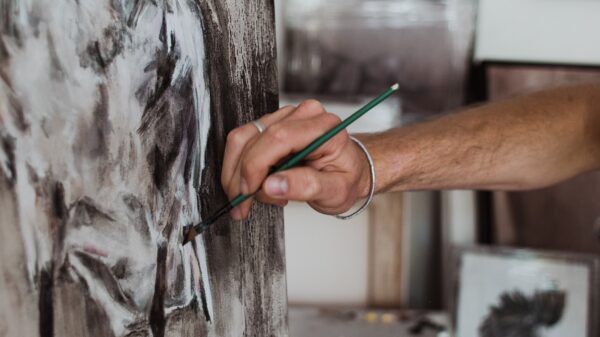Are you tired of your art looking flat and two-dimensional? Do you want to add depth and dimension to your drawings? Then it’s time to master the art of perspective drawing! Perspective is one of the fundamental techniques in art that can take your work from amateur to professional. In this post, we’ll share some essential tips for mastering perspective drawing so you can create stunning, lifelike artwork that truly stands out. So grab a pencil and paper, and let’s get started!
What is Perspective Drawing?
Perspective drawing is a type of drawing that allows you to create the illusion of depth and space on a two-dimensional surface. To do this, you’ll need to use a few different techniques, including vanishing points and foreshortening.
Vanishing points are where two lines converge in the distance. This creates the illusion of depth and space. Foreshortening is when you shorten the length of an object to make it appear closer. This also creates the illusion of depth and space.
You can use both of these techniques together to create a realistic drawing with perspective. First, identify your vanishing points. Then, start drawing your lines from those points. As you get closer to the center of your paper, start foreshortening your lines to create the illusion of depth and space.
Basic Rules of Perspective Drawing
There are three basic rules of perspective drawing that artists need to understand in order to create the illusion of depth on a two-dimensional surface. These rules are:
1. Parallel lines recede into the distance and converge at a vanishing point.
2. Objects that are closer to the viewer appear larger than those that are further away.
3. Objects in the foreground obscure those in the background.
By applying these rules, artists can create drawings with a sense of depth and space. Perspective drawing can be used for both representational and abstract artworks.
Choosing a Point of View
There are three common points of view used in art: first-person, second-person, and third-person. Each has its own advantages and disadvantages.
The First-person point of view is the most intimate, as it allows the viewer to see the world through the artist’s eyes. This can be very effective in conveying emotion or creating a sense of immediacy. However, it can also be limiting, as it can be difficult to show more than one character’s perspective at a time.
The second-person point of view is less intimate but allows for a greater sense of distance and objectivity. This can be helpful in showing multiple characters’ perspectives simultaneously or in depicting large scenes. However, it can also make it harder to connect with the characters on an emotional level.
Third-person point of view is the most objective, as it allows the viewer to see the scene from an outsider’s perspective. This can be useful for complex narratives or for providing a bird’s eye view of a situation. However, it can also make it difficult to empathize with the characters or to feel invested in their stories.
The best point of view for any given piece will depend on the artist’s goals and the needs of the story being told. There is no single right or wrong answer; experimentation and experimentation are key to finding what works best for you.
Types of Linear Perspective
Linear perspective is a technique used to create the illusion of depth and space on a two-dimensional surface. It is achieved by using a system of parallel lines, converging at a single point on the horizon line. This vanishing point creates an optical illusion, making objects appear smaller as they recede into the distance.
There are two types of linear perspective: one-point and two-point perspective. One-point perspective uses a single vanishing point, while two-point perspective uses two vanishing points, located on either side of the composition. This second type of perspective is often used to depict cityscapes, where the buildings appear to converge at different points on the horizon line.
To create a convincing illusion of depth, it is important to understand how these various techniques work. With practice, you will be able to control the perception of space in your drawings and paintings, creating images that are both realistic and visually appealing.
Tips for Creating Depth in Your Drawings
1. Use a vanishing point. A vanishing point is a single point on the horizon where all receding parallel lines appear to converge. This will create the illusion of depth in your drawing.
2. Use different levels of shading. By using darker and lighter shades of pencil, you can create the illusion of light and shadow. This will also help to create depth in your drawing.
3. Use perspective lines. Perspective lines are diagonal lines that radiate out from a single point on the horizon. This will help to create the illusion of depth and distance in your drawing.
4. Use atmospheric perspective. Atmospheric perspective is when distant objects are rendered with less detail and color than closer objects. This will help to create the illusion of depth and distance in your drawing.
Exercises to Master Perspective Drawing
If you’re looking to improve your perspective drawing skills, there are a few exercises you can practice to help you master the technique.
One exercise is to draw a scene from memory, without reference materials. Try to recall as many details as possible, including the perspective. This will help train your brain to see and remember perspective clues.
Another exercise is to look at a reference image and draw it from memory, again without looking back at the reference material. As you become more practiced with this technique, you’ll be able to better visualize how the different elements in a scene relate to one another in terms of perspective.
A third exercise is to find an image with strong perspective lines and draw them out on paper, then fill in the rest of the image around those lines. This helps train your eye to see and follow perspective lines, which is an important skill for accurate drawings.
By practicing these exercises regularly, you’ll gradually improve your ability to draw scenes with accurate perspective. With time and patience, anyone can master this challenging but rewarding technique!
Tools and Techniques for Drawing in Perspective
There are various tools and techniques that can be used to help with drawing in perspective. One useful tool is a perspective grid, which can help to delineate the different planes of a scene and show how they recede into the distance. Another helpful technique is to use vanishing points, which can be used to create a sense of depth and distance on a flat surface.
When it comes to actually drawing in perspective, there are a few things to keep in mind. First, it is important to have a clear idea of what your composition will look like before you start drawing. This will help you to map out the different elements of the scene and place them in relation to each other. Second, pay attention to the lines that define the various planes in the scene; these should converge as they recede into the distance. Don’t forget about shading; this can be used to create a sense of depth and add realism to your drawings.
Conclusion
Perspective drawing is an important skill for any artist to have in their toolbox. With practice and a few tips, you can master the technique of perspective drawing and create amazing works of art. We’ve provided some useful tips that will help you understand how to use perspective in your artwork, so now it’s up to you to take these pointers and explore the exciting world of perspective drawing!










